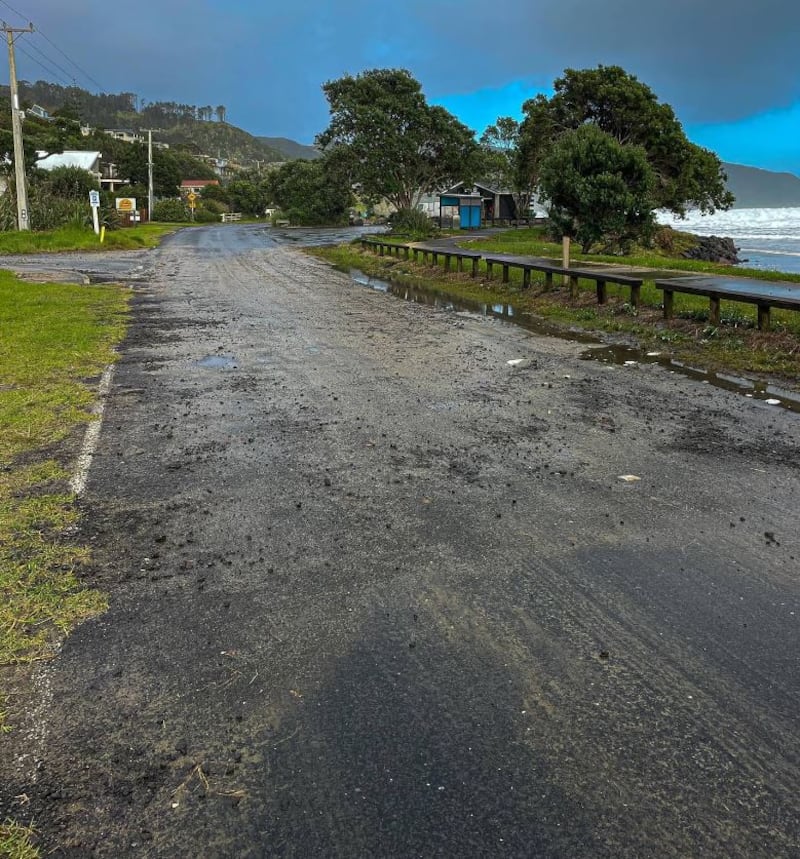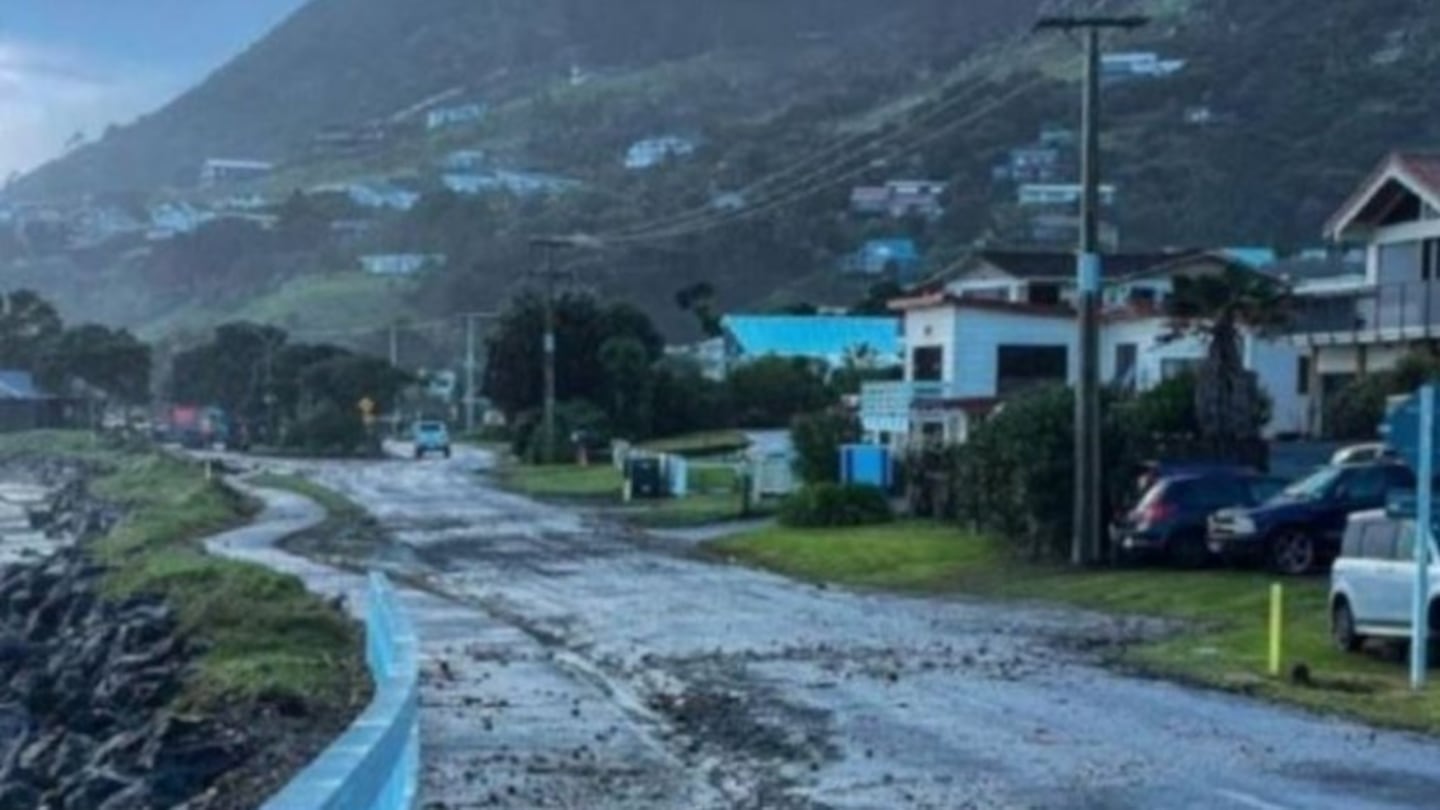Ahipara resident Lennox Goodhue-Wikitera says a massive wave swept over the road at about 8.30pm yesterday. Photo / Ahiparadise Photography.
By Ben Leahy, NZ Herald
Lennox Goodhue-Wikitera has woken bleary-eyed this morning after a “scary” night on tsunami watch in the Far North.
Goodhue-Wikitera’s hometown Ahipara, west of Kaitāia, was among coastal areas put under alert by the National Emergency Management Agency (Nema) after an earthquake north of New Zealand.
The 7.7 magnitude quake struck southeast of the Loyalty Islands just before 3pm yesterday, also triggering a tsunami threat for Vanuatu, Fiji and New Caledonia.
Nema had warned the first tsunami activity could reach New Zealand’s shores by 5pm, around North Cape, saying it could bring unusual currents and unpredictable surges.
Goodhue-Wikitera said swells and surges began to hit Ahipara in the evening. Video captured by Goodhue-Wikitera shows the moment the wave swept inland, leaving a trail of debris in its wake.
“I was pretty stressed from like, probably around 7.30pm when it started crashing up onto the footpath,” Goodhue-Wikitera said.
“Then at 8.30pm there was a massive wave and it went all the way up and over the coastal road ... 10m-15m inland.”
“So there was lots of debris on the road and the fire engine came down - it was pretty scary.”
Fire and Emergency New Zealand last night said they attended the scene after the big wave.
“We currently have one crew in attendance in Ahipara after reports of big swells and flooding over the road,” a spokesman said around 9pm.

Debris left by the tsunami surge on Ahipara's waterfront. Photo / Ahiparadise Photography
Goodhue-Wikitera said their home is exposed, being located across the road from the beach and next to a creek.
When it rains, the creek fills up and sometimes it can flood onto the property, while swells from the beach can also sometimes wash in and raise the creek’s water levels.
That meant Goodhue-Wikitera stayed on watch during an anxious night.
“I stayed up on lookout to midnight, just watching the water, and then after that the tide receded and it eased.”
Fire crews had earlier told them they could go to the marae if they needed to evacuate.
Goodhue-Wikitera said the swells and waves washing into Ahipara last night were “much, much worse” than those that came in after Cyclone Gabrielle earlier this year.
They said they didn’t yet know whether any homes had been damaged but were about to go out for a walk this morning to see.
Nema eventually lifted its warning to stay away from beaches and out of the water along much of New Zealand’s coasts at about 9.45pm yesterday.
“Nema advises that some strong and unusual currents may continue overnight and urges caution in affected beach and marine areas,” it said yesterday.
In its earlier update at 7.30pm, Nema had warned that “strong and unusual currents” were possible, as were “unpredictable surges at the shore” after an earthquake struck north of the country.
“Strong currents and surges can injure and drown people. There is a danger to swimmers, surfers, people fishing, and anyone in or near the water close to shore,” Nema warned.
“People in or near the sea in the following areas should move out of the water, off beaches and shore areas and away from harbours, marinas, rivers and estuaries.”
Areas under threat included the west coast of the North Island from Cape Reinga to Whanganui, including Auckland’s west coast, Manukau Harbour and New Plymouth.
The east coast of the North Island was considered under threat from Cape Reinga to Tolaga Bay, including Whangārei, Great Barrier, Auckland’s east coast and Waiheke Island, Tauranga, Whakatāne and Opōtiki.
The West Coast of the South Island was considered under threat from Farewell Spit to Milford Sound including Westport, Greymouth and Hokitika.
“People on boats, liveaboards and at marinas should leave their boats/vessels and move on to shore. Do not return to boats unless instructed by officials,” Nema said.
“There is no need to evacuate other areas unless directly advised by local Civil Defence authorities. Coastal inundation (flooding of land areas near the shore) is not expected as a result of this event.”



